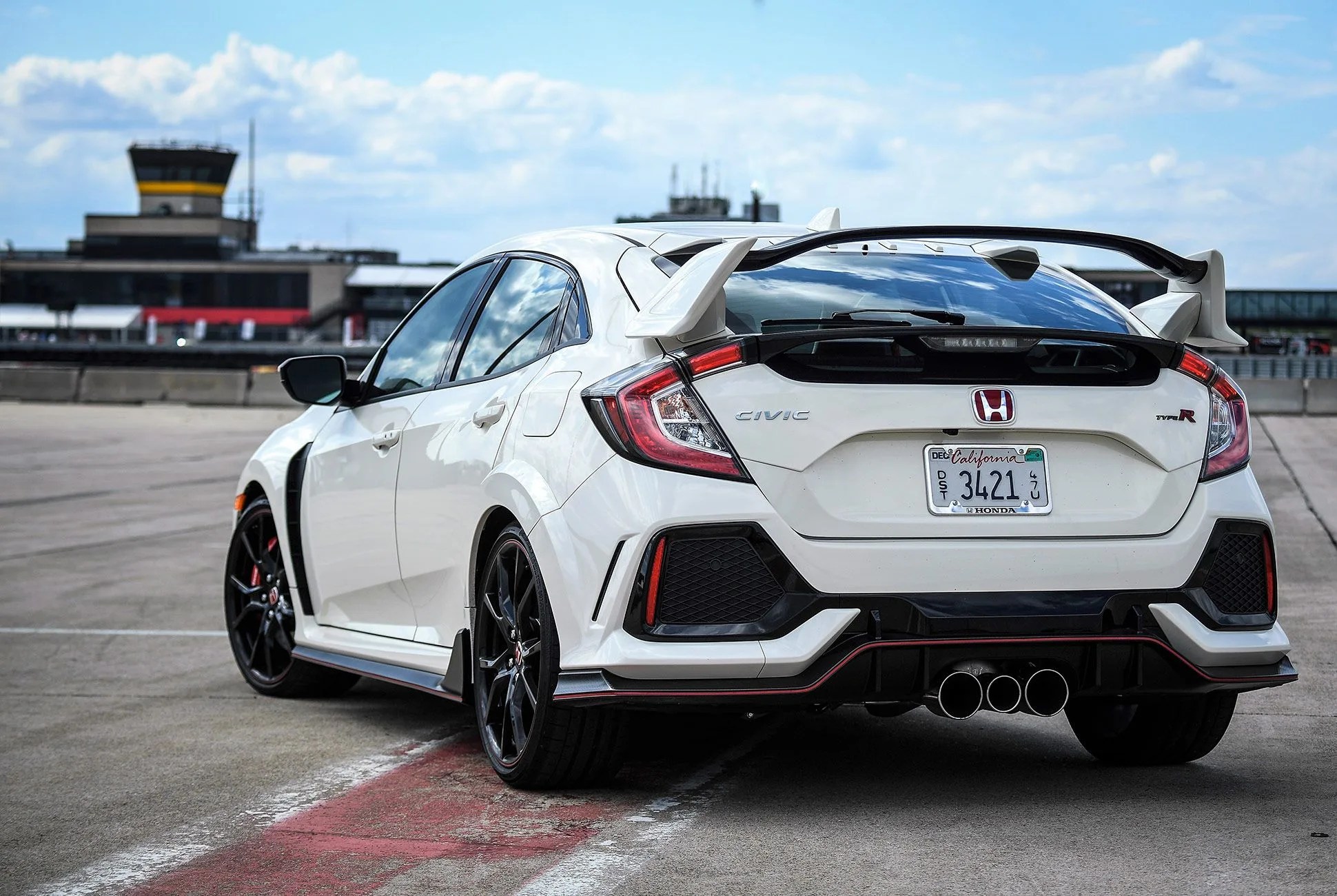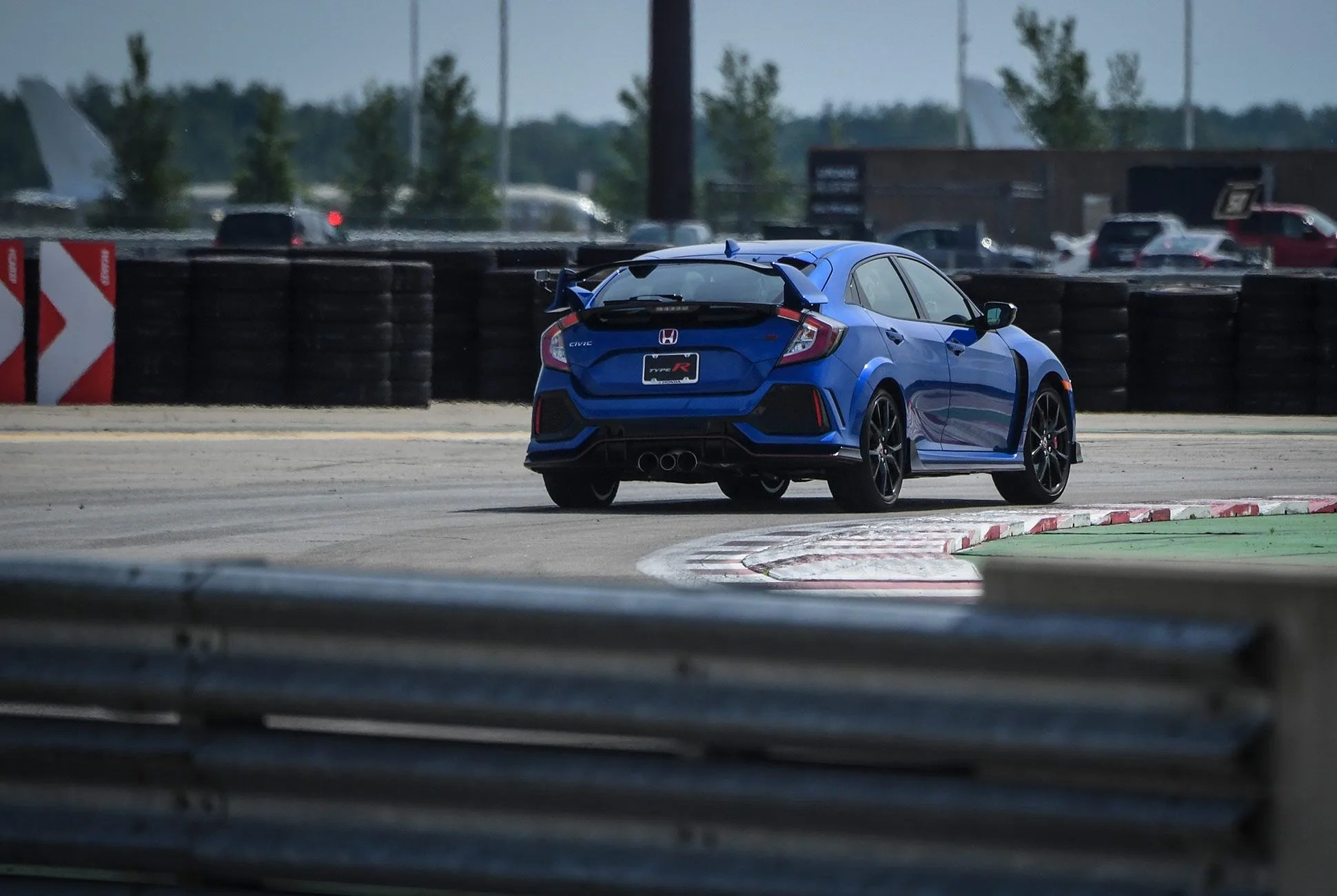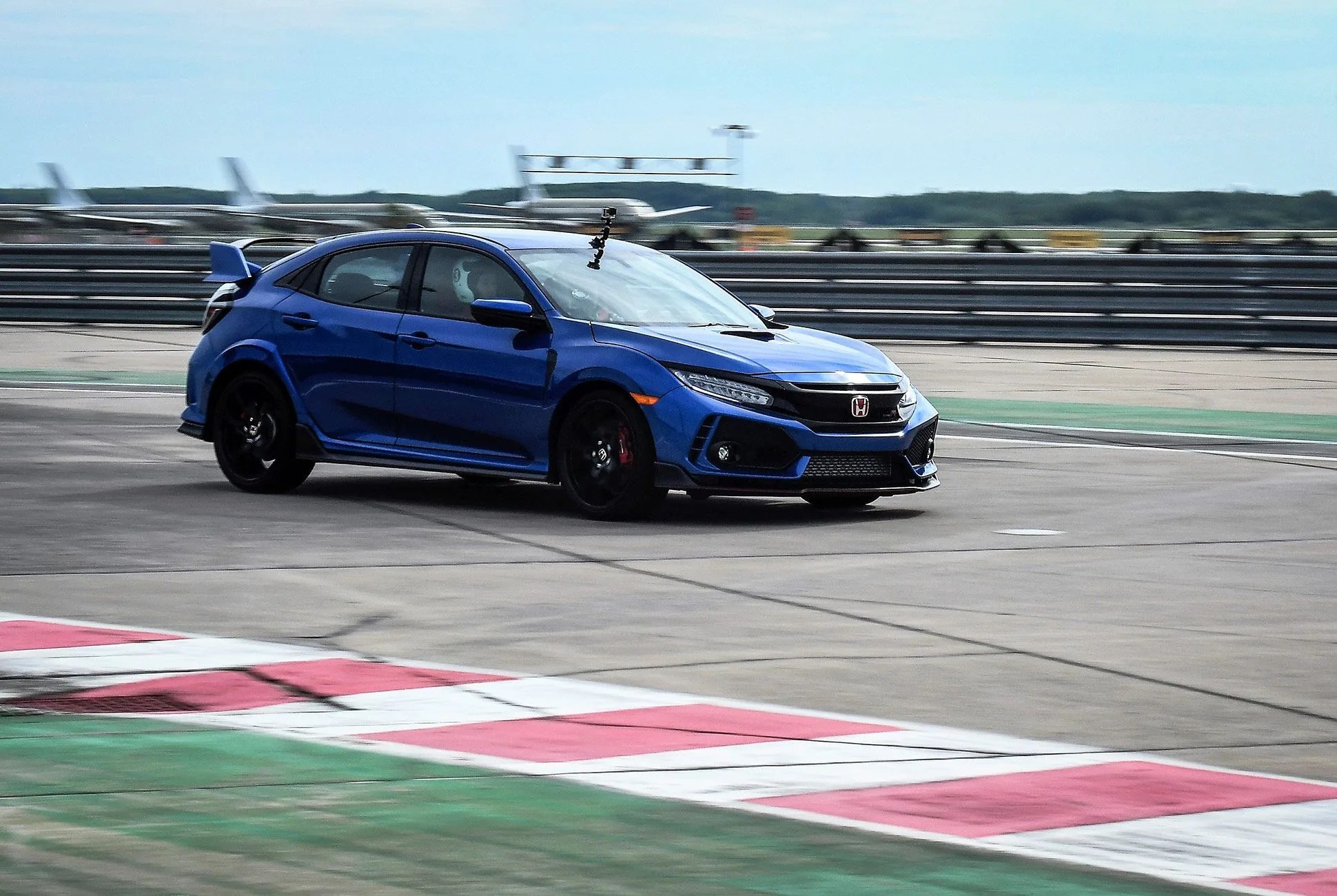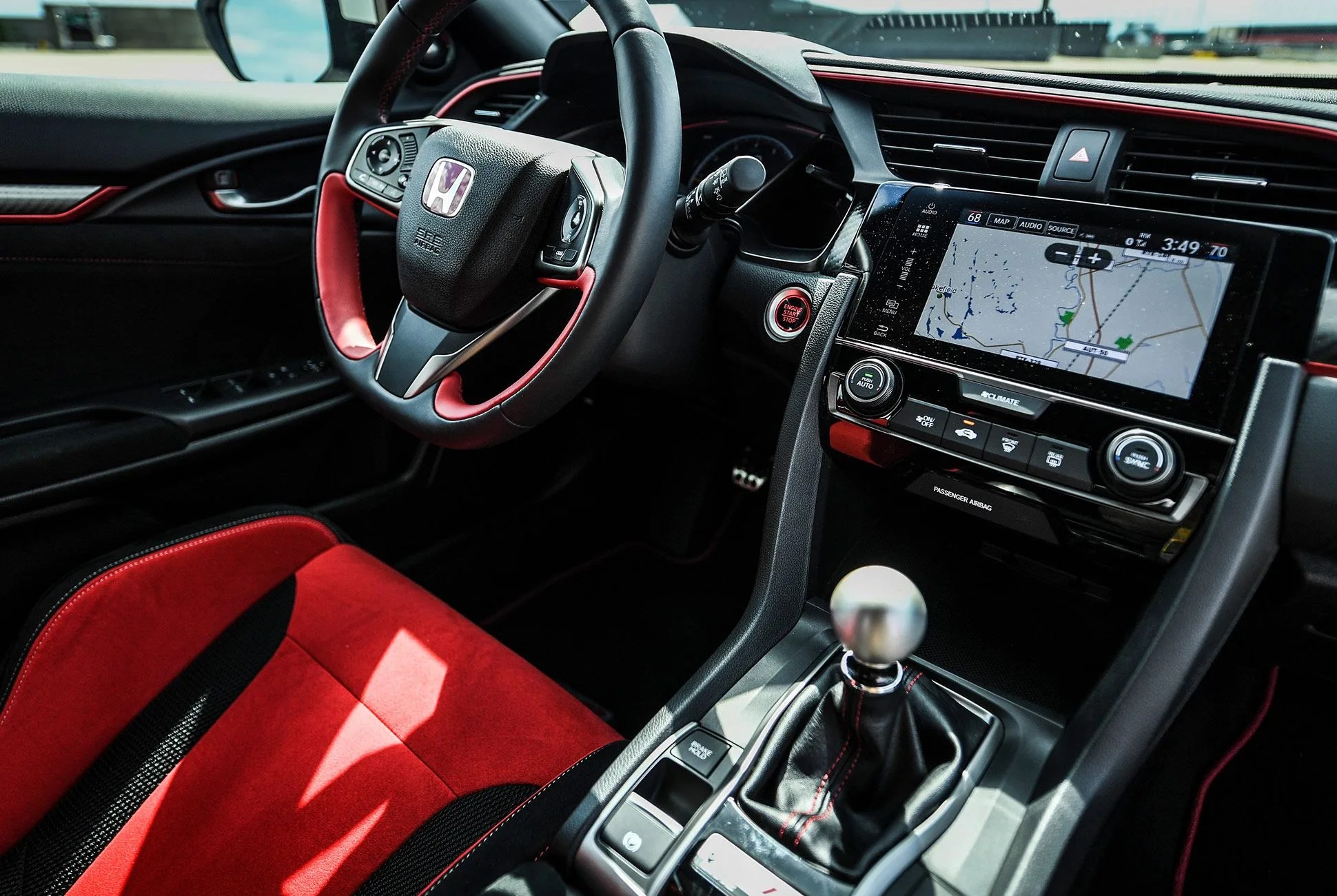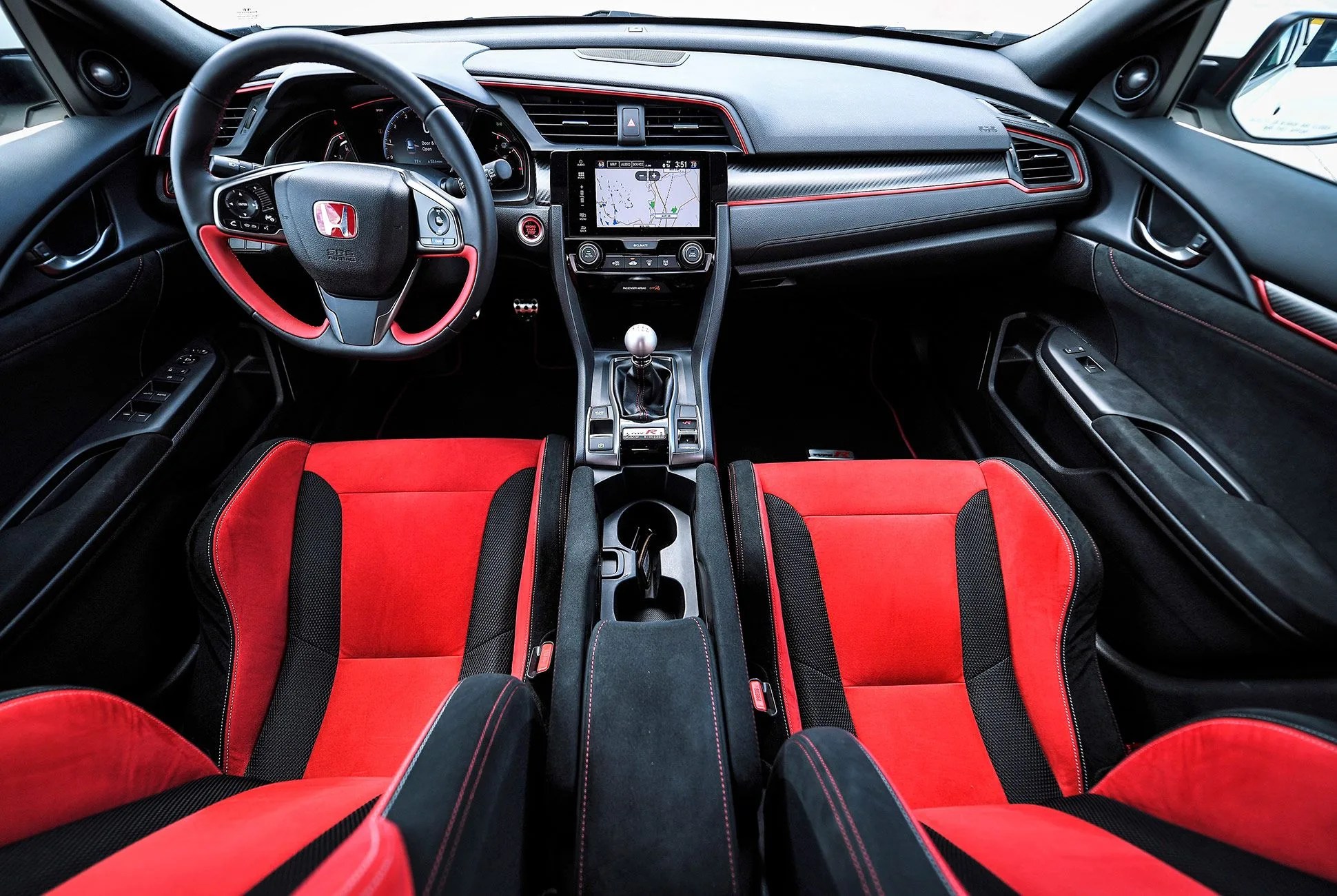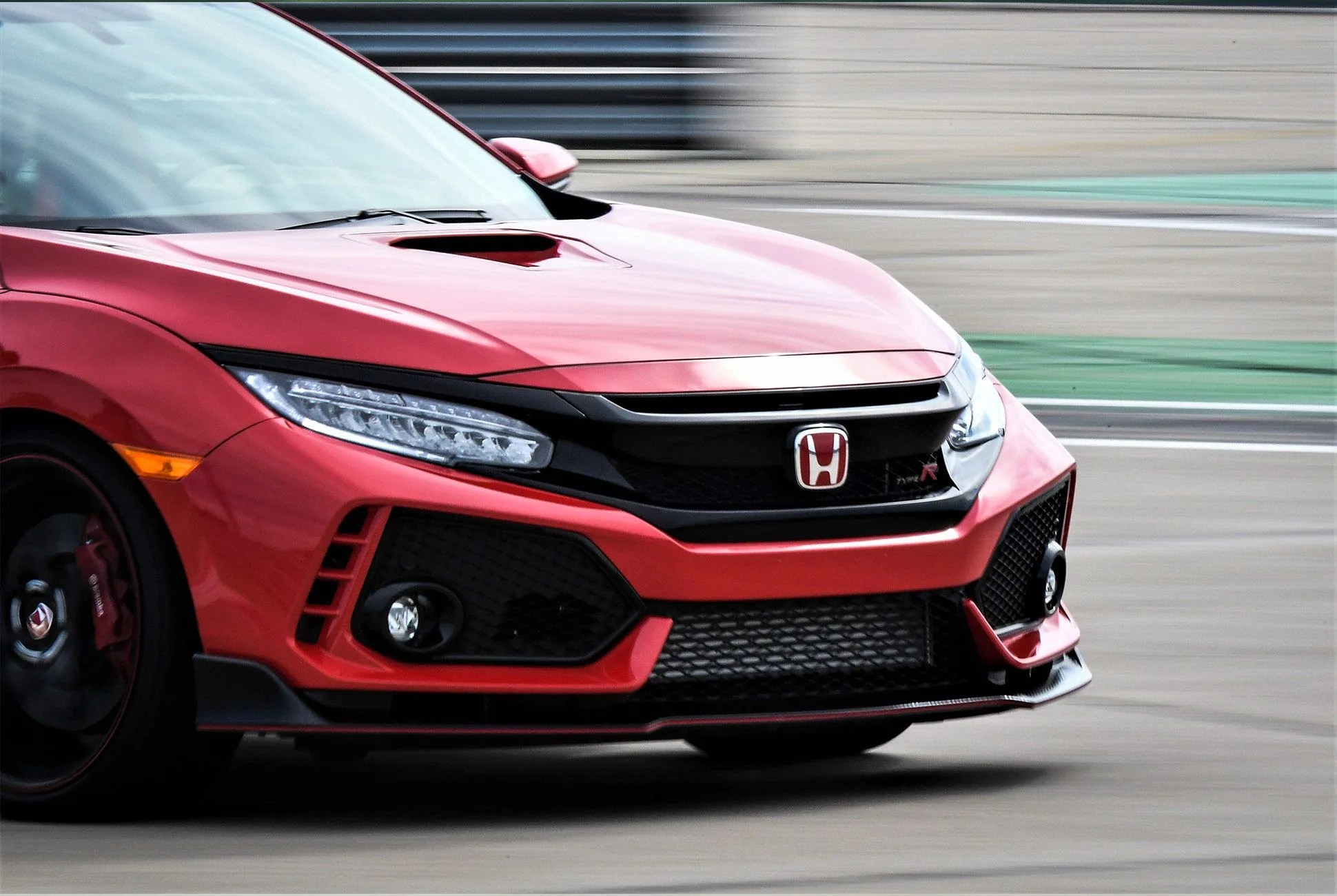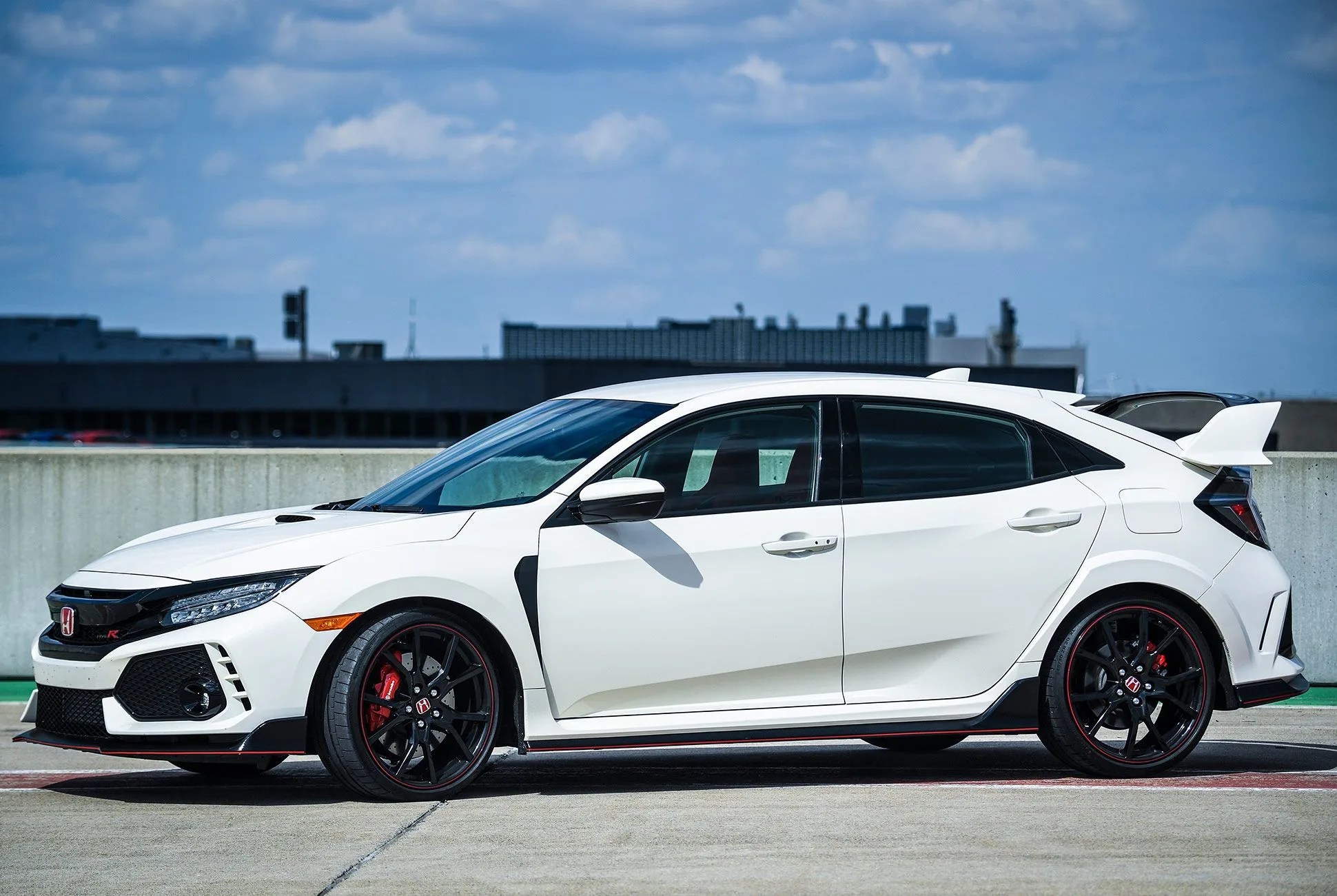10 photos
The three types of performance-car drivetrains are typically ranked thusly in order of preference: 1) All-wheel-drive; 2) Rear-wheel-drive. 3) Front-wheel drive. In reality, that ordering is arguable.
Front-wheel-drive isn’t a preference for performance enthusiasts because the physics don’t work well for the kinds of driving we demand. Asking the front wheels to steer, power, and brake a car is, well, asking an awful lot. Plus, when you pump more power to the front, you’re usually rewarded with wicked torque steer — the jarring tendency for the front wheels to twitch left or right under acceleration. Anything above, say, 250 horsepower, can put you into a wall if you’re not careful.
But, behold the Honda Civic Type R: the witheringly quick front-drive, track-ready, batshit-crazy-looking sedan that’s bowing for the first time in the United States, after several generations of success abroad. Honda’s engineers have all but eliminated torque steer — a heroic achievement, if ever there was one — and the result is, frankly, fantastic. With a 306-horsepower, turbocharged two-liter four, the Type R is the most powerful car in Honda’s lineup, and also the fastest, with a recent record-setting 7:43.80 time at the 12.9-mile Nurburgring and a staggering 170 mph top speed. (Yes, 170 mph. In a Civic.)
How’d Honda pull this off? The keys in taming the torque steer can be found in two places. First, the front suspension geometry, which is often necessarily awkward in front-wheel drive cars, has been modified in this setup — in technical terms, the steering axis offset has been reduced. Second, the Type R comes with a helical limited slip differential, whose mechanical gearing more evenly transmits torque to the front wheels.
2017 Honda Civic Type-R

